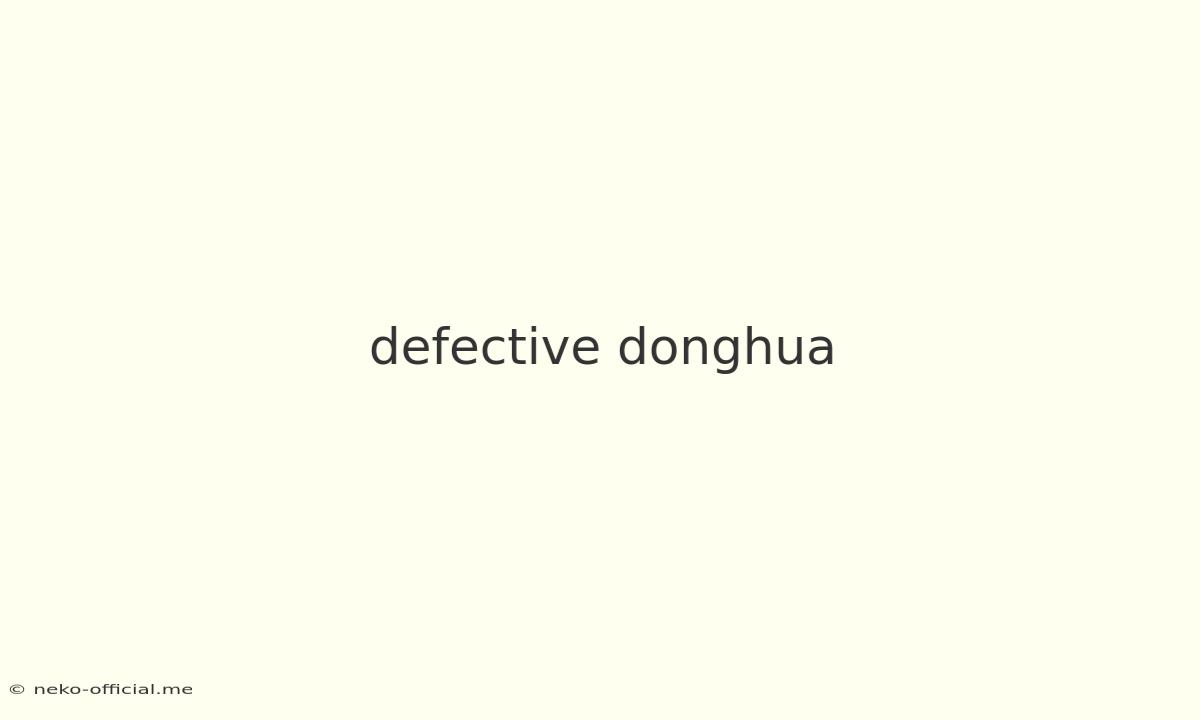The Dark Side of Donghua: Examining Defective Animation
Donghua, the vibrant and rapidly growing Chinese animation industry, has captured the hearts of audiences worldwide with its stunning visuals, compelling narratives, and diverse themes. However, like any industry, it also faces challenges, one of which is the presence of defective animation. This issue can significantly impact the viewing experience and raise questions about quality control.
What Constitutes Defective Animation?
Defective animation in donghua can manifest in various ways, ranging from minor inconsistencies to glaring errors. Some common examples include:
- Awkward or unnatural character movements: This can be especially jarring in action sequences or scenes involving complex choreography.
- Inconsistent character designs: Differences in facial features, clothing, or proportions between scenes can break immersion.
- Background errors: Misaligned objects, disappearing scenery, or inconsistent lighting can create a sense of unprofessionalism.
- Glitches or technical issues: These can range from flickering frames to complete freezes, disrupting the flow of the animation.
Causes of Defective Animation
Several factors contribute to the occurrence of defective animation in donghua:
- Production deadlines: Tight deadlines and the demand for quick turnaround times can lead to rushed animation and reduced quality control.
- Limited resources: Studios with limited budgets may struggle to invest in skilled animators and advanced technology, leading to compromises in animation quality.
- Inadequate training: Lack of proper training for animators can result in technical deficiencies and stylistic inconsistencies.
- Overemphasis on visuals: Sometimes, the focus on visually stunning effects overshadows the importance of basic animation fundamentals, leading to technical flaws.
The Impact of Defective Animation
Defective animation can have a significant impact on the viewers:
- Distracts from the story: Obvious errors can pull the audience out of the immersive experience, hindering their enjoyment of the narrative.
- Damages the reputation of the studio: Repeated instances of defective animation can damage the credibility and reputation of the studio and the donghua industry as a whole.
- Discourages viewers: Poorly animated episodes can lead to viewers abandoning a show altogether, even if the story is compelling.
Moving Forward
Addressing the issue of defective animation requires a multi-pronged approach:
- Increased investment in skilled animators: Studios need to prioritize hiring experienced and talented animators who can deliver high-quality work.
- Improved training and development programs: Providing comprehensive training programs for aspiring animators can raise overall standards and ensure a higher level of expertise.
- Stricter quality control measures: Implementing thorough quality control processes throughout the animation pipeline can catch errors before they reach the audience.
- Increased focus on fundamentals: Studios should place equal emphasis on both artistic and technical aspects of animation, ensuring a well-rounded and polished product.
By addressing these issues, the donghua industry can continue to grow and thrive, offering audiences immersive and visually stunning experiences while maintaining a high standard of quality.
